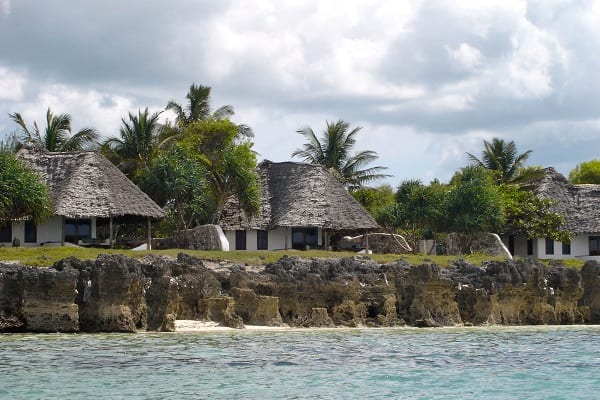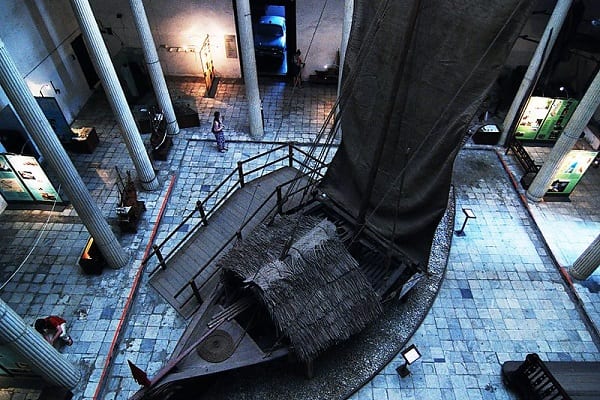TANZANIA
HUJAMBO!
Our experiences
the best recommendations
Scuba diving, Snorkeling and beach holiday at mafia islanD
Mafia Island, also a part of the Spice Islands, is much smaller than Pemba, and contrary to its name, is actually quite peaceful. The name is derived from a Swahili word which translates to “a healthy dwelling place.” Mafia Island is particularly famous among game fishermen, beach bums and scuba divers. Its white sand beaches rival those found in Zanzibar, and the lack of crowds makes it a better option for travelers wanting some privacy during their travels. Mafia Island also offers fascinating diving opportunities for divers with all kinds of skill levels and presents more than 400 species of fish, whale sharks and breathtaking reefs.
Boat safari in Selous Game Reserve
Covering an area of more than 50,000 km², the Selous Game Reserve is the largest game reserve in Africa and one of the largest protected areas in the world. The reserve runs across five regions of Tanzania, covering 5% of the country, and is home to the largest concentrations of elephant and buffalo. Leopards, wild dogs, lions, hippos, crocodiles, giraffes, wildebeests, antelopes, and a range of birdlife can all be spotted in the reserve, to name but a few. The Rufiji River is a main geographical feature of the reserve and boat safaris along the river can provide the opportunity to see a wide range of flora and fauna
Climb Mount Kilimanjaro
If you fancy summiting a whole continent, climbing Africa’s highest peak (and also one of the largest volcanoes in the world) is an adventure that doesn’t take any technical climbing unlike the highest summits of the other continents.
Mount Kilimanjaro, or Kibo, rises from the dusty savannah plains of northern Tanzania, at 5,859 metres (19,341 ft) above sea level. You can conquer the mountain and reach the highest point – Uhuru, meaning “freedom”- on a trek that takes anything from six to eleven days.
As you ascend you pass through moss-covered forest that gives way to alpine desert and then glaciers. The snow-capped peak on a mountain so close to the Equator still takes me by surprise, as it first did the early explorers who thought they were being tricked by a mirage
WILDBEEST MIGRATION
The stuff of wildlife documentaries, watching the Great Migration is one of my most memorable experiences in Tanzania. This mass movement of wildebeest plays out in Tanzania each year, culminating in the Mara River crossings between July and October.
In their search for fresh grazing, herds that can number thousands of animals risk the crocodile-infested river and the awaiting leopards on the far bank in many hazardous river crossings.
November’s short rains bring new life to the grasslands of the southern Serengeti. They also bring the wildebeest, who can detect rain from more than 50 kilometres away.
The herds converge on the Serengeti’s short grass plains, to give birth to their young in January time.
ACCOMODATION.
Popular destinations

Ras Mbisi Lodge
The only lodge on a deserted 8km stretch of palm-lined beach, Ras Mbisi offers a heavenly escape to a little-explored island in the Indian Ocean. Free of the mangroves that fringe most of Mafia’s coastline, the beautifully crafted beach bandas lead straight onto the ivory sand.
It’s an adventure to get here, but one that is rewarded. Following a 35-minute flight in a small aircraft from Dar es Salaam it takes a 45-minute bumpy ride (the hotel arranges an airport pick-up), first through fields dotted with cows grazing and then a coconut tree forest, to arrive at Ras Mbisi

Singita Sabora Tented Camp
The most opulent, romantic tented camp in Africa, furnished with authentic 1920s handmade campaign furniture, cut glass, chandeliers, four posters, Persian rugs and bowls of fresh roses, in one of the most remote and beautiful parts of the planet. Add flawless service and you understand its acclaim.to the definitive Kenyan dining experience.
Situated on the western corridor of Serengeti known as Grumeti, this is the classic African landscape: vast plains dotted with wild animals and bonsai-shaped acacias under big blue skies. The migration moves through here April to June, but gameviewing is always excellent. Aside from it’s beauty, this is one of the most exclusive reserves in Africa: a 140,000-hectare private reserve shared between 100-odd guests accommodated in four separate, very different encampments

Mwiba Lodge
Texas billionaire Dan Friedkin set out to build a family safari getaway that would ratchet the luxury safari lodge up another notch, and he did just that with the Mwiba Lodge, offering a spectacular setting, stylish décor, sophisticated cuisine and extremely intelligent service.
Set in a private 51,000-acre wildlife reserve in the south-west of the Serengeti, this exclusive lodge, with its thick and scrubby vegetation, is a far cry from the savannah landscape typical of the central Serengeti region. While the wildlife in the area might be a bit skittish at times, the quality of its safari tours is excellent, focusing as much on the fascinating smaller species as the bigger ones. Between January and March, guests can visit the migration herds around Ndutu as a day trip

Matemwe Lodge
Zanzibar’s original eco-chic beach lodge with 12 vibrantly furnished guest villas and two pools perched on a coral rag cliff. Just opposite is the Mnemba Island Marine Conservation area which is home to nesting green turtles and more than 600 species of coral reef fish.
The lodge is situated beside an 11 mile-long beach (17 km) near the village of Matemwe in the northeast of the island. Opposite the lodge is the diving haven of Mnemba Island. As with the whole east coast, the sea here is tidal receding up to a kilometre at low-tide. The beach can also be affected by seaweed between September and November
ABOUT TANZANIA

Tanzania is the largest country in East Africa and includes the islands of Zanzibar, Pemba and Mafia. Situated just south of the equator, Tanzania is bordered by the Indian Ocean and eight countries – Kenya, Uganda, Rwanda, Burundi, Democratic Republic of Congo, Zambia, Malawi and Mozambique.
This beautiful country is home to Mount Kilamanjaro, the tallest mountain in Africa. Three of the largest lakes on the continent are also found in Tanzania – Lake Victoria in the north, Lake Tanganyikain the west and Lake Nysa in the southwest.
Tanzania’s population includes around 120 different African tribal groups. The largest group is the Sukuma, who live in the north-western part of the country, south of Lake Victoria.
The country’s earliest people were hunters and gatherers, who inhabited the land as far back as 5000BC. Around 800AD, traders moved to the country from India, Arabia and Persia (present day Iran), creating a diverse mix of peoples and cultures.
Today, about 90 percent of Tanzanians live in the rural areas and live off what they can grow on the land. In more recent years, however, people have started to migrate from the countryside to developing towns and cities.
A range of different religions are followed across Tanzania. Approximately one third of the population are Muslim, one third are Christians, and the remaining third follow traditional African religions.
The country’s favourite sports are football and boxing.
Tanzania has lots of amazing wildlife! Some of Africa”s most famous mammal species are native to this beautiful country, including the wildebeest, zebra, giraffe, elephant, rhino, lion and leopard. Crocodiles and hippopotamuses can be found along riverbanks and the shores of lakes, and giant turtles live off the coast, too!
Tanzania has a number of important national parks and nature reserves – such as the Selous Game Reserve, where one of the largest populations of elephants live, and The Gombe Stream National Park, where animal expert Dr Jane Goodall carried out her famous research on chimps in their natural habitat. The Serengeti National Park, Tanzania’s oldest and most popular park for tourists, is home to over 1.7 million wildebeest and about a million other animals.
Sadly, many of Tanzania’s wildlife species are endangered or threatened due to illegal poaching.
Tanzania has a president, who is the head of the country. Presidents are elected through a General Election, held once every five years. Zanzibar has its own President, assembly and laws.
Tanzania’s national and political capital is a city called Dodoma, located in the centre of the country. Until 1974, the capital was Dar es Salaam, on the east coast of Tanzania. Dar es Salaam is still the country’s biggest and richest city, and many government offices remain there.
African tribes have lived in the area that is now Tanzania for thousands of years. In the 18th century, Arab traders used the native people as slaves. During this time, Zanzibar became the centre for the Arab slave trade.
From 1890, Britain controlled Zanzibar, and Germany controlled Tanganyika (today an area in mainland Tanzania), until Britain gained full control of the region following World War II. In 1964 the independent nation of Tanzania formed when Zanzibar and Tanganyika merged as one.
Some of the world’s oldest human settlements have been found in Tanzania, at a site called Olduvai Gorge. The hundreds of fossilised bones and stone tools excavated here, are over two millions years old! These fossils have been important in the study of human evolution.




